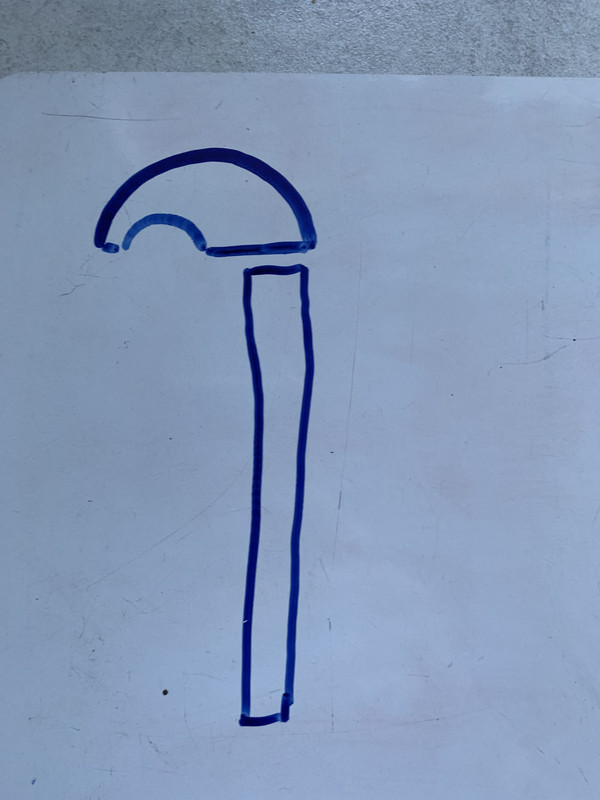Time and accuracy is one approach.
That's interesting.
If you don't have a hollow plane of the right radius, no worries, it's perfectly easy without one.
In fact probably easier if it's a nice No7 or 8, or a long woody even better, being lighter and less work.
You could mark up in the same way but it's simpler to mark up the circle at each end, with a pencil and pair of compasses, or draw around something of the right diameter.
Then plane off the 4 corners of your blank at about 45º, to just nearly touch the circle marks.
You now have 8 corners and you plane these off in the same way, just a gnat's clear of the circle marks.
You now have 16 corners and could carry on planing, or spoke shaving, or sanding. to finish off.
PS you can see the accuracy of your planing by looking at the corners (what's the plural of arris?) which should be parallel with no variation of the flat between them. If you are going off a bit it can be corrected if you haven't gone too far.
Sanding with a sheet of paper held in both hands pulled over the profile, like you'd dry your back with a bath towel.
PPS it's quick and easy once you've got it, and can be done with a short plane but needs more care and attention.


































